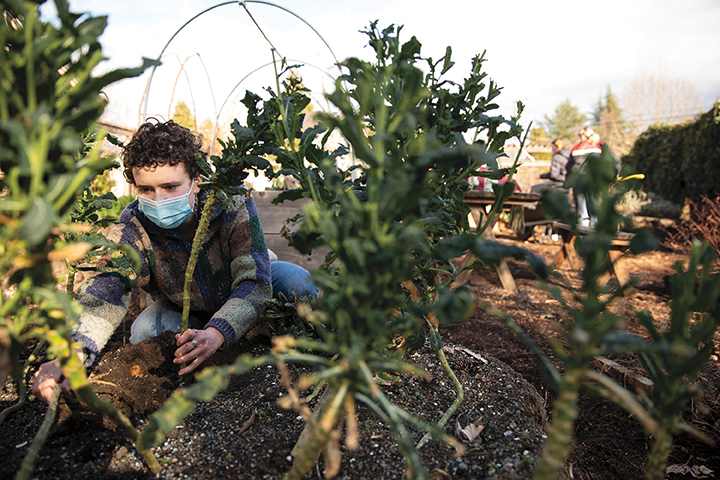The pandemic provides multiple teaching moments for students looking at the nation’s food supply.
The start of the COVID-19 lockdown in the spring of 2020 spurred home bakers to take to their ovens as a way of coping with the upheaval in their lives. The resulting spike in the demand for flour led to bare grocery shelves, and left Thor Oechsner, an organic grain farmer in upstate New York, scrambling to cope.
In Oechsner’s case, a lack of flour wasn’t the culprit. Production logistics were. “We produce 50-pound bags for commercial customers, and overnight the demand switched to [consumer-friendly] two-pound bags,” Oechsner told a class of Puget Sound students by Zoom. “We were not set up for it.” Clean out of branded bags, his team slapped labels on plain ones and ran the stitching machine nonstop to meet demand. “We worked seven days a week, 18 hours a day.”












